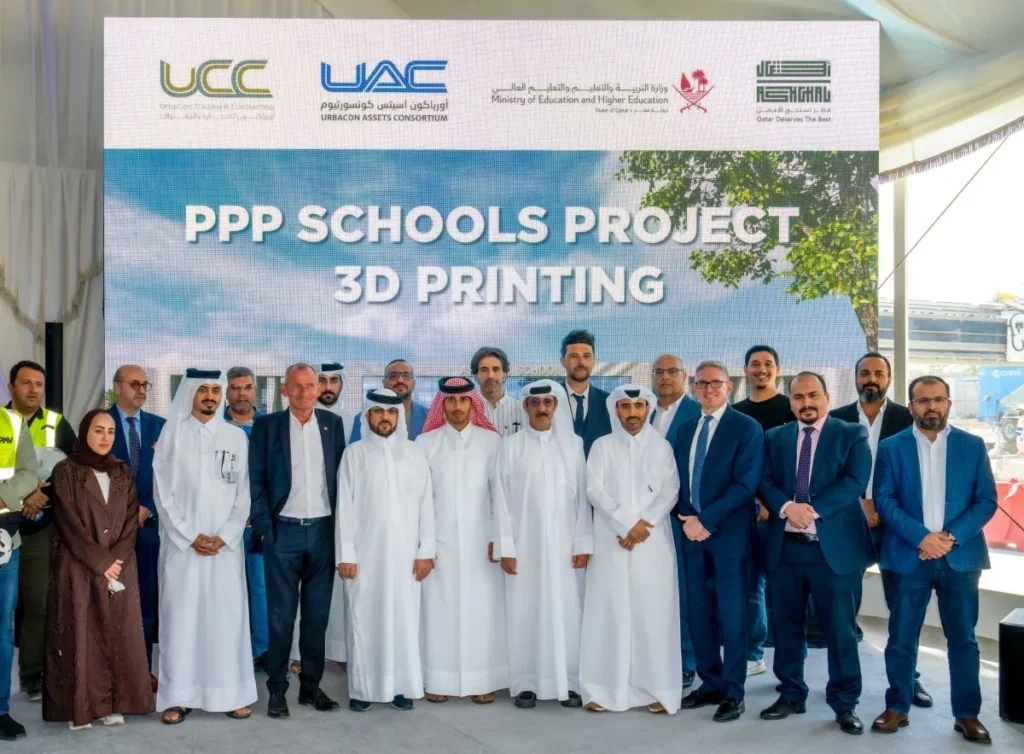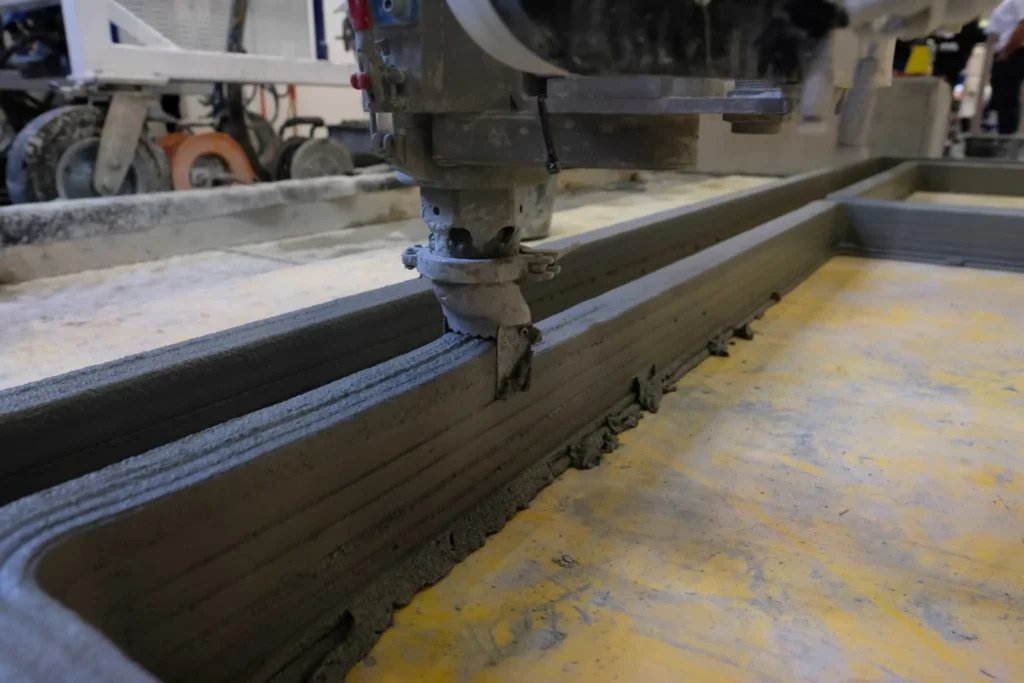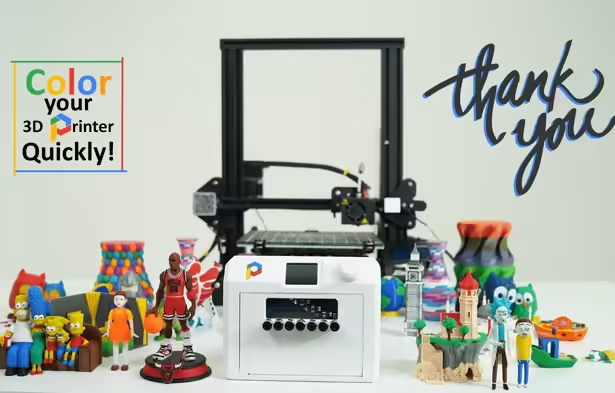Introduction: From Sneakers to Schools—3D Printing Scales Up
3D printing has moved well beyond desktop prototypes and sneaker midsoles. In Qatar’s desert, giant construction printers are now fabricating what are expected to become the world’s largest 3D‑printed school buildings—two massive, two‑story campuses that each span roughly 20,000 square meters (≈215,000 sq ft) and form part of a 14‑school national expansion program. The project folds directly into Qatar National Vision 2030 goals around innovation, sustainability, and human development. For the 3D printing community—and especially for readers who follow additive breakthroughs in footwear—the signal is huge: 3D printing is maturing from product innovation to mission‑critical public infrastructure. If we can print learning environments at national scale, what else can we decentralize, customize, and build faster with less waste?
1. Qatar’s Record‑Breaking 3D‑Printed School Project
Key facts at a glance
- 14 public schools in the program; 2 will be fully 3D‑printed structural shells.
- Each printed school: ~20,000 m² (≈215k sq ft) built‑up area; combined printed area: 40,000 m² (≈430k sq ft).
- Claimed to be ~40× larger than the previous global size record for a 3D‑printed building.
- Delivered by UCC Holding in partnership with Qatar’s Public Works Authority (Ashghal).
- Printing hardware: two custom COBOD BODXL gantry printers ~50 m L × 30 m W × 15 m H (about the size of a Boeing 737 hangar).
- Site plot per school: ~100 m × 100 m.
- Printing phase underway; full 14‑school program targeted for completion by end of 2025.

Why this matters
This isn’t a tech demo or a pavilion—it’s real educational infrastructure designed to serve students for decades. By committing to print at this scale, Qatar is stress‑testing additive construction against building codes, climate realities (extreme heat), scheduling pressures, and cost oversight typically associated with public works projects. Success here could legitimize large‑format additive construction for schools, housing, clinics, and disaster‑relief shelters worldwide.
2. Additive Construction Meets Classroom Demand
Many countries struggle to build classrooms fast enough to keep up with population growth, migration, or modernization goals. Traditional construction—rebar, formwork, block, labor—moves slowly and generates heavy waste.
Additive advantages for education builds:
- Speed: Layered wall systems can be printed in days vs. weeks of manual masonry. (In Malawi, the world’s first 3D‑printed school had its walls printed in under a day; more below.)
- Labor flexibility: Robotic printers reduce the size of on‑site crews—useful in extreme‑heat regions or where skilled labor is scarce.
- Repeatable digital designs: Once a base school template is validated for codes, it can be re‑scaled, mirrored, or adapted site‑by‑site with minimal redesign cost.
- Data‑driven iteration: Print logs and sensor data feed continuous improvement—thickness, infill, curing times—accelerating learning curves across multiple school sites.
Malawi comparison: a glimpse of what scale could do
UNICEF has estimated a shortage of ~36,000 primary school classrooms in Malawi—one that would take about 70 years to close using conventional construction. A 3D‑printed pilot there showed how radically timelines can compress: the printed structural walls were completed in approximately 18 hours, and advocates believe a national gap of that scale could be closed in about a decade if additive approaches were widely adopted. Qatar’s mega‑project operates at far larger square footage, but it echoes the same potential: print faster, educate sooner.
3. Engineering the Mega‑Print: Materials, Climate & Process

Printing multi‑story schools in a hot desert climate is non‑trivial. Qatar’s project team and partners at COBOD undertook extensive pre‑production testing—reportedly 100+ full‑scale print trials in Doha—to dial in:
Material formulation
A pumpable, extrudable cementitious mix that can withstand high ambient heat, retain layer adhesion, and control vertical slump. Local aggregates (including desert sand blends) are being evaluated/used to reduce import volumes and embody local material identity.
Custom extrusion hardware
The BODXL printers carry a bespoke nozzle assembly engineered for high‑volume, high‑precision layer output across wide spans. Stable bead geometry is critical when stacking multi‑meter walls before full cure.
Thermal + schedule strategy
To beat the desert heat and improve curing, significant printing occurs overnight when temperatures drop, reducing cracking risk and improving dimensional stability.
Hybrid build sequencing
As in most current 3D‑printed buildings, the printers produce the load‑bearing or envelope walls; human crews follow with structural tops, roofs, MEP, fenestration, finishes, and interior build‑outs. Expect learnings here about coordination between automated and manual trades at national project scale.
4. Sustainability & Efficiency: Up to 60% Less Material Waste
Concrete is one of the world’s largest CO₂ contributors, so any reduction matters. Additive construction deposits material only where needed, often hollowing internal wall volumes or using ribbed geometries to achieve strength with less mass.
Environmental performance levers:
- Material Savings: Early project reporting cites up to 60% less material waste vs. conventional form‑and‑pour or block construction.
- Reduced transport: Bulk printing mixes can be made closer to site (and potentially with local sand), cutting shipping emissions.
- Lower temporary material use: No large disposable formwork systems; fewer single‑use molds.
- Energy staging: Nighttime printing reduces peak‑hour energy loads in hot climates; complementary to grid management.
Combine these with lifecycle benefits—better thermal mass shaping, passive shading geometries, and precision apertures—and 3D‑printed schools could outperform conventional builds in both embodied and operational carbon.
5. Desert‑Inspired Design Freedom
Rigid formwork constrains curves; 3D printing invites them. Qatar’s school concepts draw from dune and wind‑carved desert formations, resulting in flowing exterior walls and soft, organic geometries that would be expensive—and often impractical—to execute by hand at scale.

Why design freedom matters:
- Cost‑neutral curves: Complex forms come “free” once encoded in the print path.
- Integrated performance: Curves can channel wind, cast shade, and shed heat—function layered into form.
- Cultural expression: Schools can visually reference local landscapes, strengthening community identity.
- Student experience: Learning in a building that looks like the future can inspire STEM curiosity.
6. From Lattice Midsoles to Mega‑Walls: Shared DNA With 3D‑Printed Footwear
Readers of 3DShoes know the footwear industry has been a proving ground for additive manufacturing:
- Every major athletic brand has explored 3D printing for customization, faster prototyping, and reduced inventory risk.
- Adidas Futurecraft 4D (and later 4DFWD) popularized performance lattice midsoles that are impossible—or prohibitively costly—to mold traditionally.
- New Balance, Nike, Under Armour and others have prototyped custom plates, cushioning zones, and bespoke fits using additive.
- Startups + design labs (Zellerfeld, HILOS, OXMAN, etc.) push circular materials, print‑to‑order workflows, and fully printed uppers.
Parallel benefits across shoes & schools
| Footwear Benefit | Additive Construction Analog | Why It Matters |
|---|---|---|
| Complex lattice cushioning | Ribbed, infill‑optimized wall cavities | Strength where needed; material savings |
| Custom fit insoles & size ranges | Site‑specific school layouts, climate‑shaped envelopes | Local adaptation without full redesign cost |
| On‑demand production reduces inventory | On‑site printing reduces prefab shipping & warehousing | Leaner supply chains, lower capital tied up |
| Rapid prototyping of new soles | Iterative test prints of wall sections/nozzles | Faster R&D cycles |
| Sustainable materials experimentation | Low‑cement, recycled aggregate, or geopolymer mixes | Lower carbon footprint builds |
Takeaway: Lessons learned in digital design, parametric latticing, materials tuning, and distributed production from the footwear space directly inform how we might standardize and scale printed buildings—and vice versa. The sectors are converging faster than many realize.
7. Qatar in the Gulf 3D Printing Race (and Why That Helps Everyone)
The Middle East has emerged as a high‑visibility test bed for large‑format 3D printing. Dubai grabbed headlines with its government‑backed goal to have a sizable share (target: 25%) of new buildings incorporating 3D printing by 2030 across construction, medical, and consumer sectors. Qatar’s schools project now raises the bar by linking additive construction to national education outcomes at record‑breaking scale. These innovation‑led bets attract global engineering talent, accelerate standards development, and create case studies other nations can adapt more affordably.
Regional “innovation races” tend to spill over: suppliers scale manufacturing, software improves, codes evolve, training pipelines expand, and costs drop for late adopters. If Qatar proves additive works for public schools, ministries of education elsewhere can walk a clearer path—specs, budgets, RFP language, vendor shortlists—cutting years off adoption curves.
8. Global Ripple Effects: Will Your Next Community—or Shoe—Be Printed Nearby?
What happens when we combine:
- Validated large‑format printers
- Digitally adaptable building templates
- Localized material sourcing
- Distributed manufacturing logic proven in consumer goods (like shoes)
You get credible momentum toward localized, low‑waste, print‑to‑need manufacturing ecosystems. Tomorrow’s supply chains may ship files, not finished goods. Municipalities could license a vetted school design, adapt it for climate and code, and print locally with regionally sourced mixes. Footwear brands could license lattice libraries to micro‑factories embedded in retail or health clinics, producing custom performance footwear on demand. Both scenarios shrink shipping emissions, curb overproduction, and unlock personalization.
Add regulatory frameworks (already emerging in Dubai and elsewhere), and a global additive build‑stack begins to take shape: standards, certification pathways, material specs, BIM‑to‑print translators, maintenance protocols, and circular end‑of‑life streams for printed materials.
9. Challenges to Watch
3D printing is not a silver bullet. Key hurdles remain:
- Codes & certification: Structural, fire, and seismic approvals must catch up to layered print geometries.
- Material durability: Long‑term weathering in high‑salinity desert air; shrinkage & cracking controls.
- Cost parity: Printer CAPEX vs. labor savings; lifecycle ROI vs. traditional builds.
- Skilled workforce transition: Training crews to operate, maintain, and coordinate with robotics.
- Supply chain for print media: Consistent quality mixes at scale; admixture logistics.
- End‑of‑life recyclability: Grinding/reprinting pathways for cementitious or composite printed elements.
Expect Qatar’s program to surface real‑world data on many of these points—data that will influence global building codes and vendor development roadmaps.
10. Conclusion: Additive Manufacturing’s Tipping Point Is Here
Qatar’s 3D‑printed schools are more than a record—they are a proof‑of‑readiness moment for large‑scale additive construction. The initiative fuses national education priorities with sustainability targets, digital design freedom, and manufacturing methods that mirror what’s already reshaping footwear. Each successful print pass in the desert lowers the psychological and regulatory barrier for printing homes, clinics, community centers—and yes, more consumer products—closer to where people live.
If you’ve been watching 3D‑printed shoes evolve from niche experiments to serious performance gear, you already understand the pattern: iterative R&D, then limited releases, then scaled rollouts once economics and quality align. Qatar suggests the built environment may be entering that next‑stage curve. The question isn’t if additive manufacturing will go mainstream across sectors—it’s how fast, and who leads.
Stay with 3DShoes.com as we track the cross‑industry ripple effects: materials breakthroughs that jump from footwear to buildings, distributed print networks that slash waste, and the policy moves that could make localized, on‑demand manufacturing the new normal.
Fast Reference Data
Qatar 3D‑Printed Schools – Quick Stats
- Printed Schools: 2 (within 14‑school program)
- Built‑Up Area (per printed school): ~20,000 m² (~215k sq ft)
- Total Printed Area: ~40,000 m² (~430k sq ft)
- Printer Size: ~50 m L × 30 m W × 15 m H gantry (COBOD BODXL)
- Claimed Scale vs. Previous Record: ~40× larger
- Target Completion: End of 2025
- Sustainability Note: Up to 60% material waste reduction (project reporting)
Malawi Pilot – Perspective
- Classroom Backlog: ~36,000 needed
- Conventional Build Timeline: ~70 years
- 3DP Gap‑Closure Estimate: ~10 years
- First 3DP School Wall Print Time: ~18 hours
FAQ: Qatar 3D‑Printed Schools
A. Construction is slated for completion by end‑2025, per UCC Holding and Ashghal timelines.
A. The BODXL printers extrude the structural and envelope walls; human crews follow with roofs, MEP, glazing, and finishes.
A. Project engineers cite up to 60 % less material waste thanks to precise layer deposition and hollow infill geometries.
A. Lab tests show layer‑printed concrete can achieve code‑compliant compressive strength; local seismic codes still require region‑specific testing and approvals.
A. Early pilots suggest lower labor and material costs, but savings hinge on local cement prices, printer access, and regulatory acceptance.
Sources
- Fox News / CyberGuy – “World’s Biggest 3D‑Printed Schools Are Underway in Qatar” (July 16, 2025)
- Interesting Engineering – “Qatar Hits Print on the World’s Largest Structure” (July 2025)
- New Atlas – “World’s Largest 3D‑Printed Building Smashes All Previous Records” (July 9, 2025)
- 14Trees / UNICEF – “World’s First 3D‑Printed School Opens in Malawi” (2024)
- World Economic Forum – “One‑Quarter of Dubai’s Buildings Will Be 3D Printed by 2025” (2018)
Suggested External Further Reading
- Fox News / CyberGuy: World’s largest 3D‑printed schools underway in Qatar
- UCC Holding press release: World’s Largest 3D Printed Construction Project Commences in Qatar
- New Atlas: World’s largest 3D‑printed building (Qatar Schools Project)
- Interesting Engineering: Qatar turns desert sand into world’s largest 3D‑printed structure
- New Atlas: World’s first 3D‑printed school in Malawi
- World Economic Forum: Could 3D‑printed schools be transformative for education in Africa?
- UAE Gov Portal: Dubai 3D Printing Strategy (25% of buildings 3D printed by 2030)




